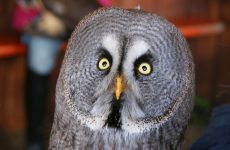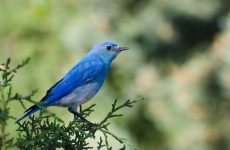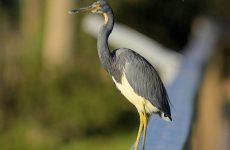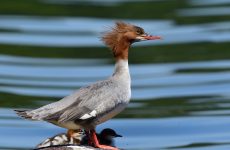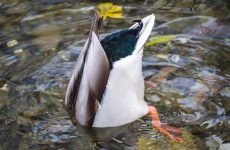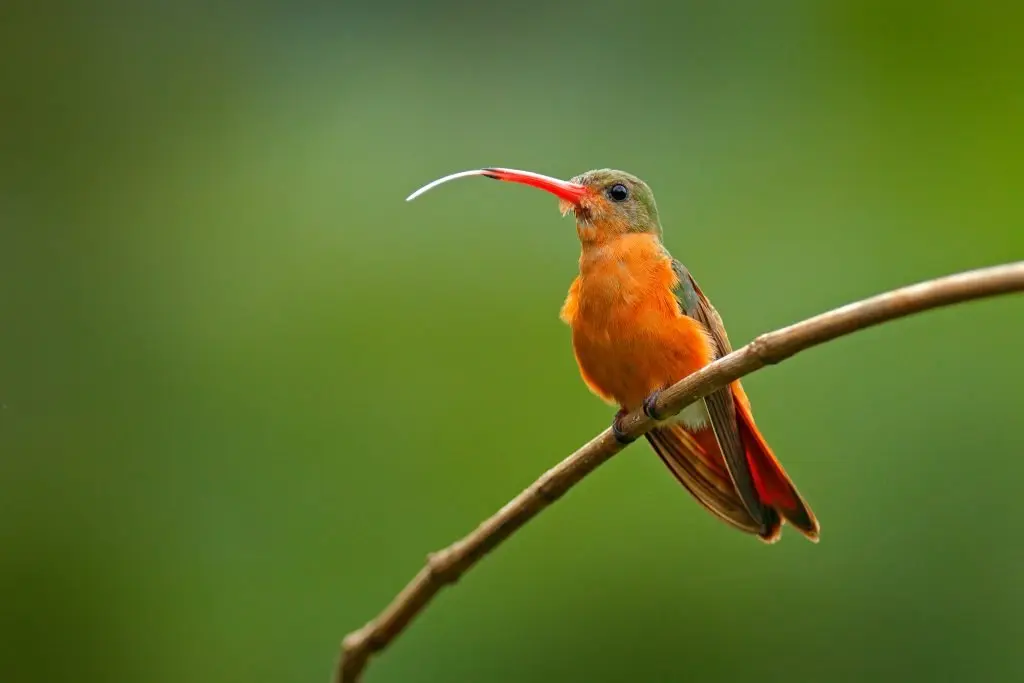
There are 20 species of hummingbirds that can be spotted in North America, and 5 of them are red or have red coloring. Male and female hummingbirds can be different colors and the male is usually brighter colored, and the female can be quite plain in comparison.
Many Hummingbirds are migratory and spend the winter in Mexico or further south and the summer in the United States and Canada for breeding.
This guide will help you identify any red hummingbirds you have spotted in North America with photos, when and where to spot them, and identification guides.
7 Species of Red Hummingbird in North America:
1. Rufous Hummingbird
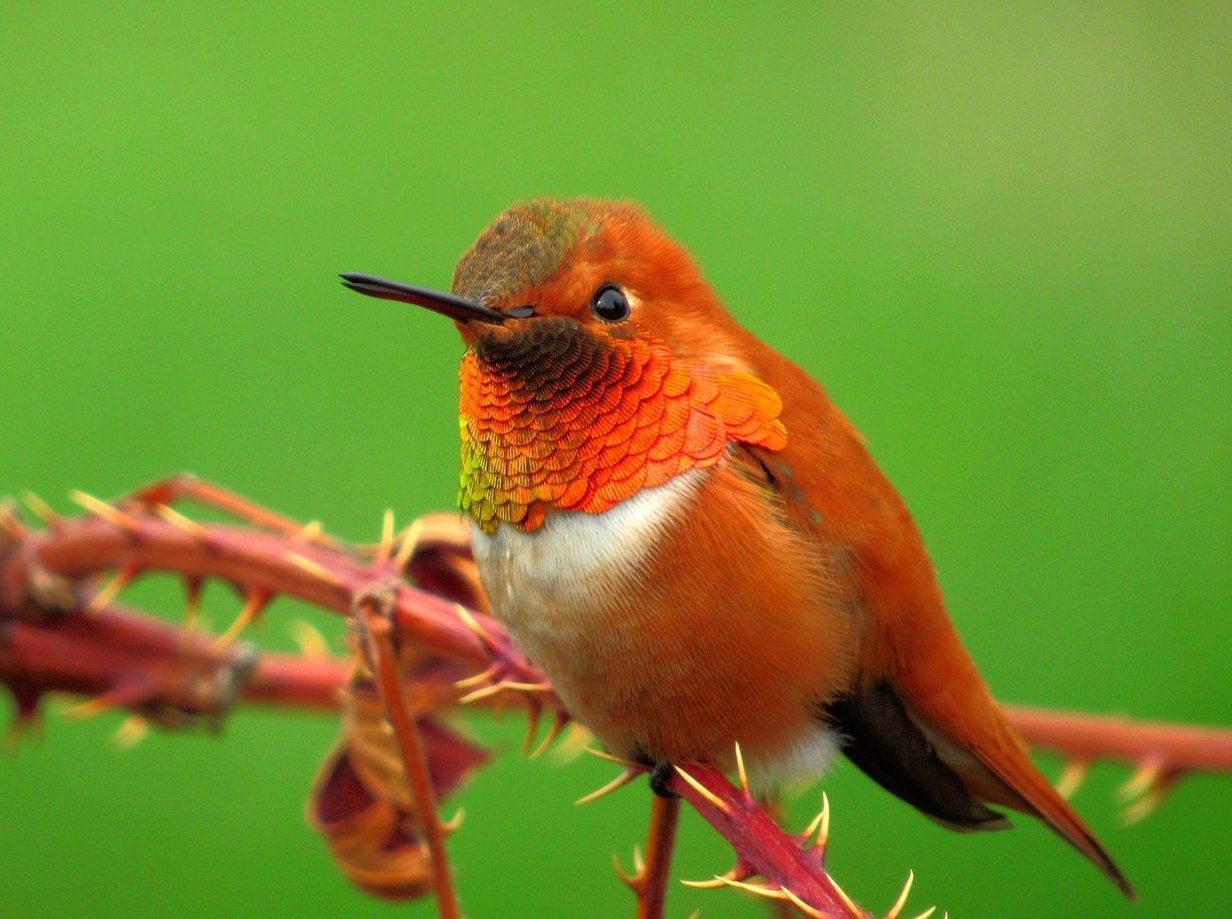
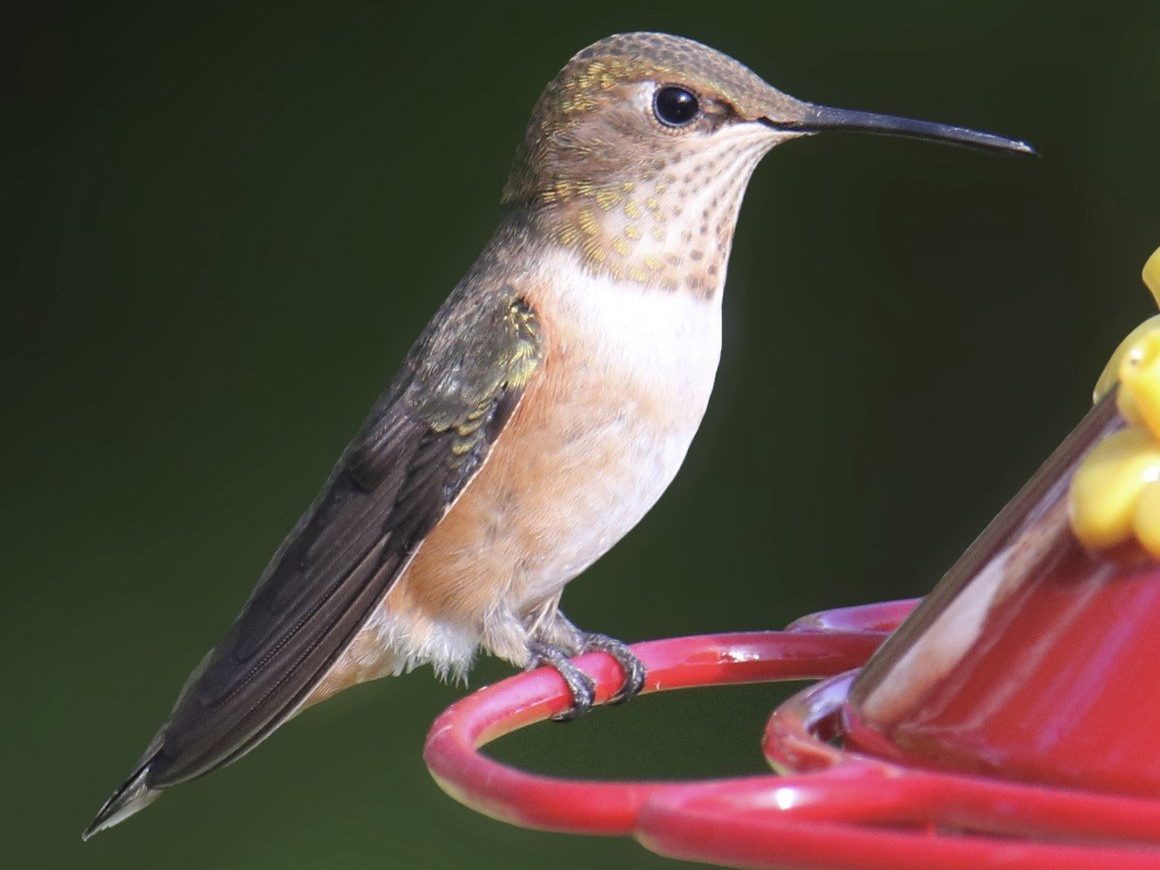
Rufous Hummingbirds are bright orange on the back and belly, with a white patch below the throat and an iridescent red throat in the males. The females are greenish-brown on the back and rusty colored on the sides with a whitish belly.
- Length: 2.8-3.5 in (7-9 cm)
- Weight: 0.1-0.2 oz (2-5 g)
- Wingspan: 4.3 in (11 cm)
Rufous Hummingbirds are one of the longest migrating birds relative to their size, traveling up to 4000 miles each way. They breed in northwest Alaska and northwest Canada in the summer and migrate down to Mexico and the Gulf Coast for winter.
Migration of Rufous Hummingbirds is north along the Pacific Coast in spring and the Rocky Mountains in late summer and fall. Migration in the spring of Rufous Hummingbirds starts in February, and they usually reach Alaska by mid-April. Migration in the fall is in July and August and ends by October.
A study has shown that Rufous Hummingbirds start their migration earlier and travel north more inland than before.
Rufous Hummingbird numbers have declined by around 60% since the 1970s
Rufous Hummingbirds feed primarily on nectar from colorful tubular flowers and insects such as gnats, midges, and flies. They build a nest high up in trees using soft down from plants and spider webs to hold it together. They lay 2-3 tiny white eggs about 0.5 in (1.3 cm) long. Their habitat is mountain meadows and coniferous forests.
They are very aggressive and chase off any other hummingbirds that may appear, even larger hummingbirds or resident ones during migration. They won’t hang around long during migration but will still chase off most other hummingbirds given a chance.
2. Allen’s Hummingbird
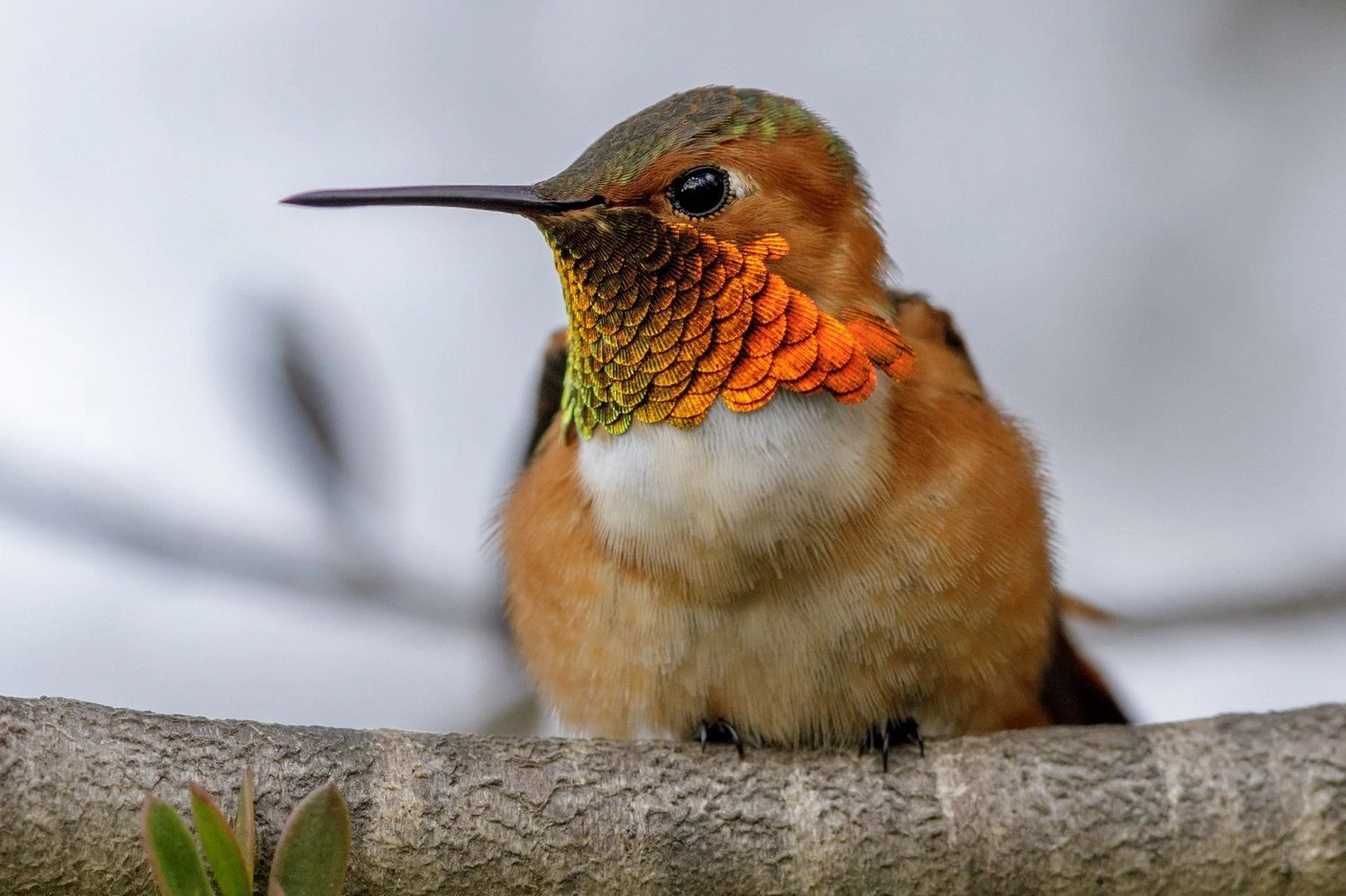
Allen’s Hummingbirds look very similar to Rufous Hummingbirds, so it’s hard to tell them apart in the narrow band of coastal forest and scrub they inhabit between California and Oregon.
Male Allen’s Hummingbirds have iridescent reddish-orange throats and orange bellies, tails, and eye patches. Both males and females have long straight bills and coppery-green backs, but the females lack the bright throat coloring.
- Length: 3.5 in (9 cm)
- Weight: 0.1-0.1 oz (2-4 g)
- Wingspan: 4.3 in (11 cm)
The difference between Allen’s and Rufous Hummingbirds is the narrow outer tail feathers in Allen’s Hummingbird.
Allen’s Hummingbirds build nests near shady streams and have up to 3 broods a year. They spend winter in Mexico and migrate as early as January up to the Pacific Coast in California and Oregon, but they are most common between March and July. Some remain residents all year in central Mexico and around Los Angeles.
3. Cinnamon Hummingbird

Cinnamon Hummingbirds are bronze-green on their backs, and as their name suggests, they are cinnamon-colored underneath from under their chin to their tail. Their tails are reddish, and their beaks have a black tip.
- Length: 3.9 in (10 cm)
- Weight: 0.18 oz (5 g)
Usually, Cinnamon Hummingbirds are found from northwestern Mexico down to Costa Rica, but a few have ventured into the Southwestern United States. They inhabit forest edges of pine and oak and open scrubby areas, feeding on nectar and insects.
4. Anna’s Hummingbird
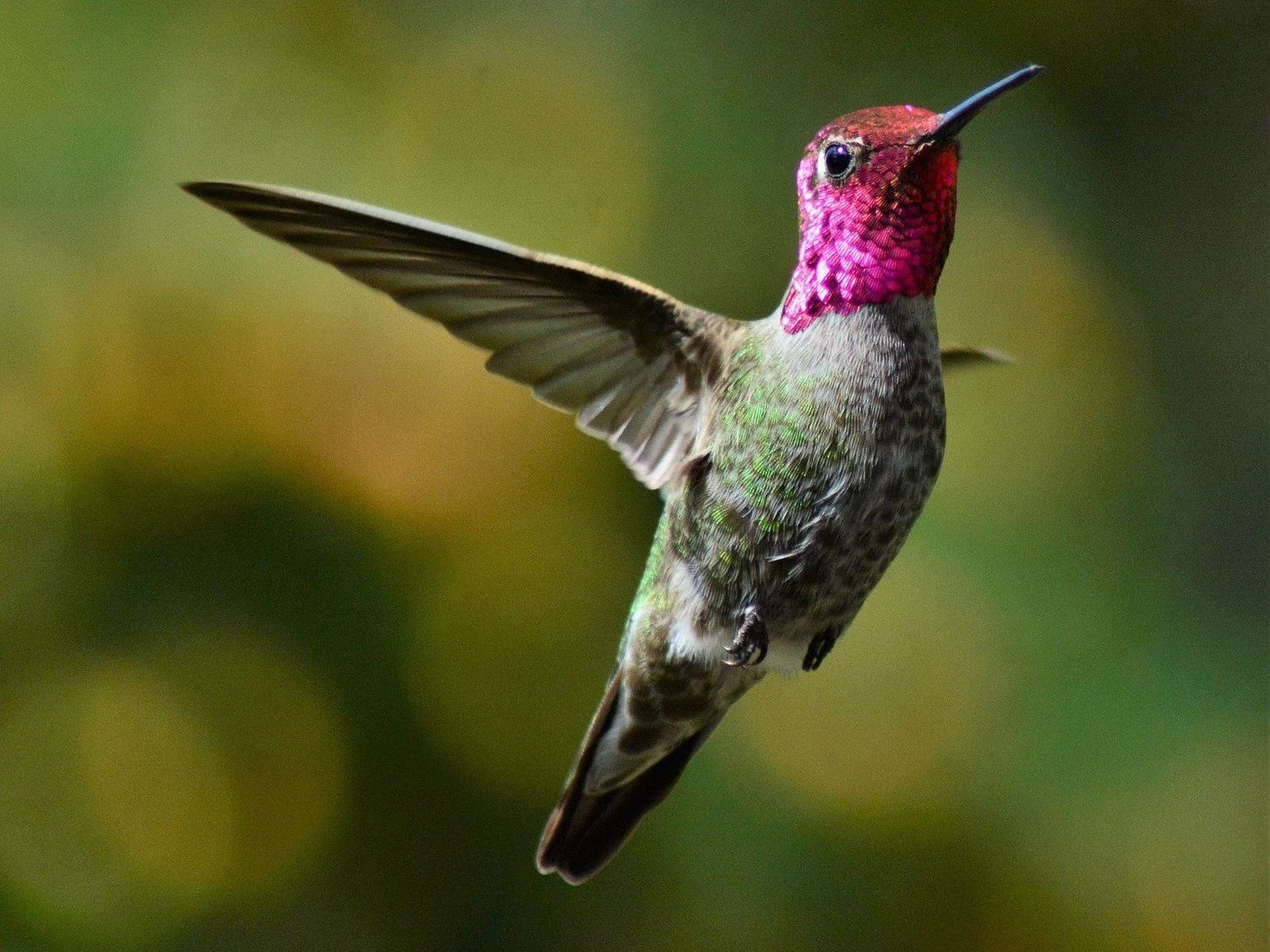
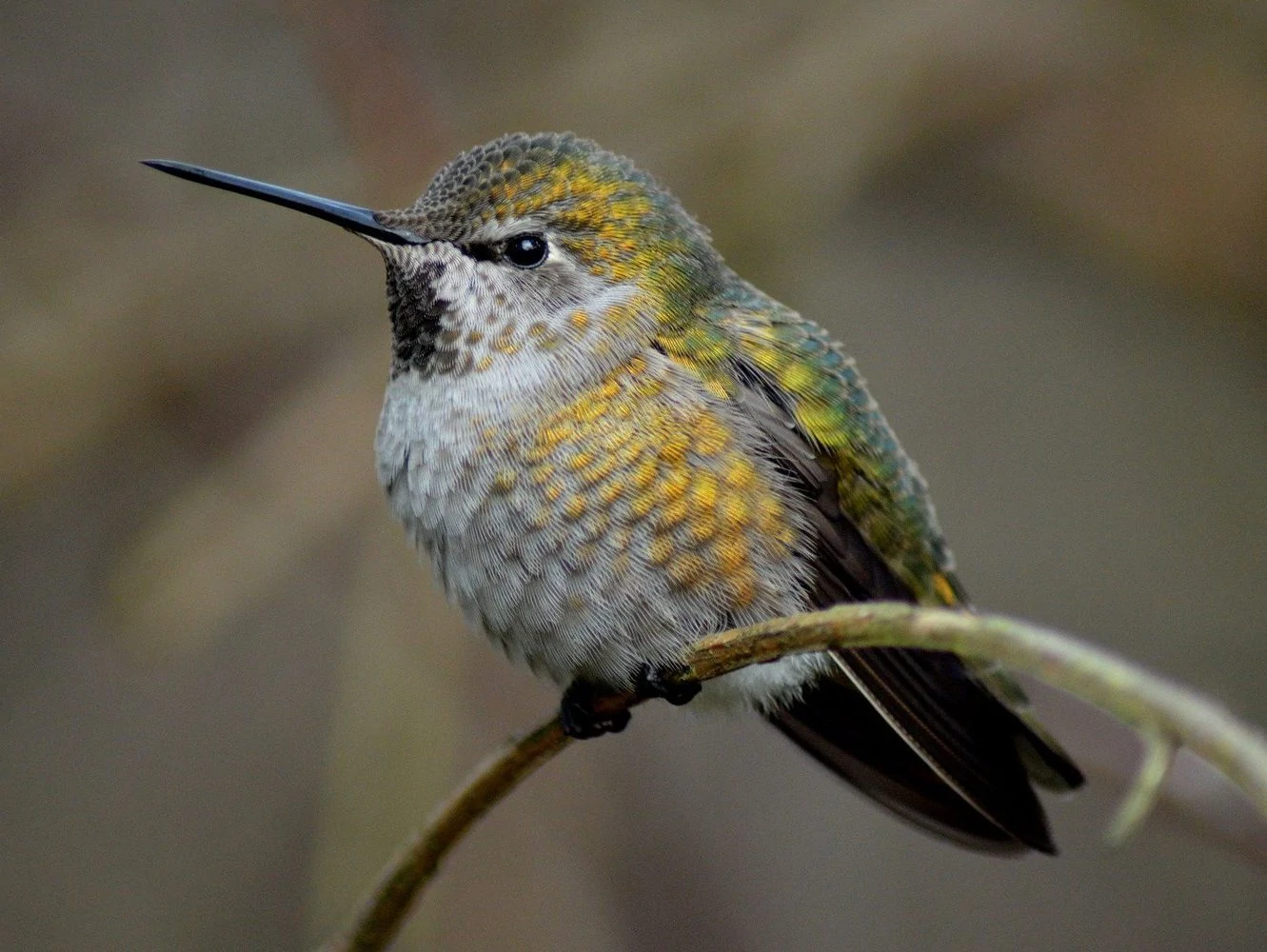
Anna’s Hummingbirds are tiny birds that are primarily green and gray. The male’s head and throat are iridescent reddish-pink. The female’s throat is grayish with bits of red spotting.
- Length: 3.9 in (10 cm)
- Weight: 0.1-0.2 oz (3-6 g)
- Wingspan: 4.7 in (12 cm)
Anna’s Hummingbirds are the most common hummingbird along the Pacific Coast and they do not migrate, which is unusual for hummingbirds.
Their range is from British Columbia to Baja California in both summer and winter. However, some birds may move from the far north of their range for winter.
Habitats of Anna’s hummingbirds are often in backyards and parks with large colorful blooms and nectar feeders, but they are also found in scrub and savannah.
The diet of Anna’s Hummingbirds includes nectar, tree sap, and small insects and spiders. Nectar sources are Eucalyptus, Nicotiana, Agave, Castilleja, Diplaucus, Ribes, Silena, Arctostaphylos, and nectar feeders.
Anna’s Hummingbird call sounds:
Anna’s Hummingbirds’ nests are high up in trees at around 6 – 20 ft, and they often have 2-3 broods a year, and female hummingbirds do all of the work!
They make dramatic dive displays during courtship as the males climb up to 130 feet into the air before diving back to the ground with a burst of noise from their tail feathers.
5. Ruby-throated Hummingbird
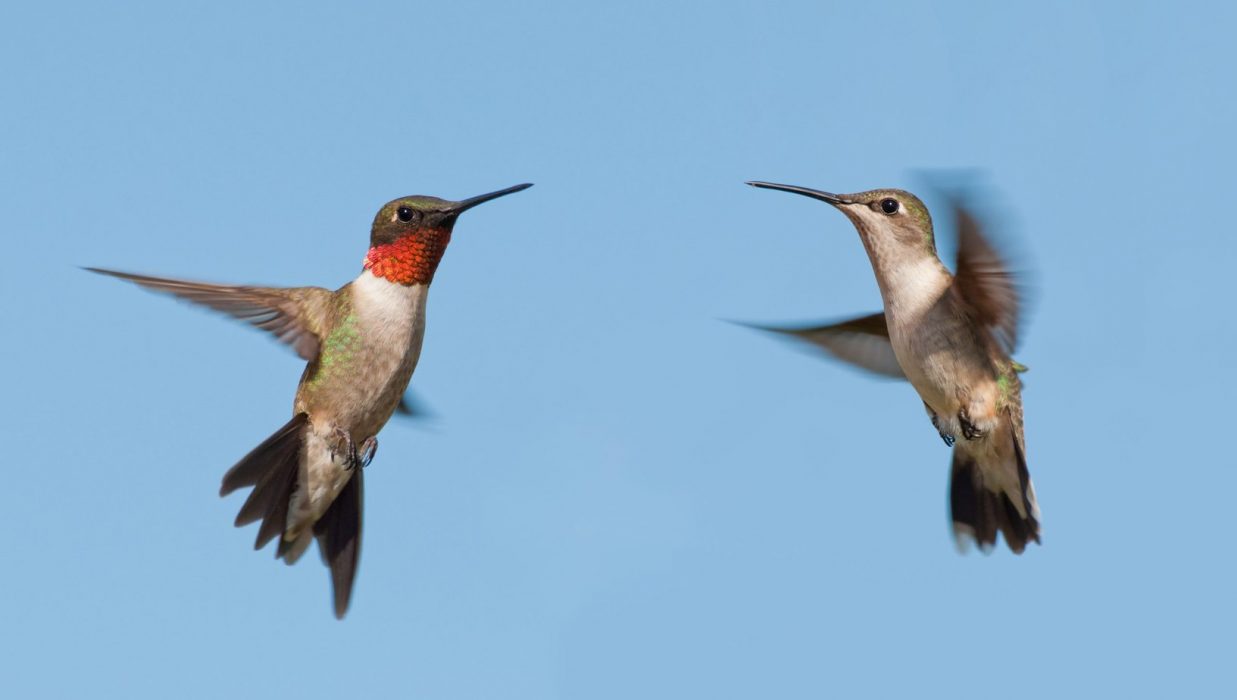
The Ruby-throated Hummingbirds are bright green on the back and crown, with a gray-white underside and the males have an iridescent red throat.
Female Ruby-throated Hummingbirds are green on the back and white underneath with brownish crowns and sides.
- Length: 2.8-3.5 in (7-9 cm)
- Weight: 0.1-0.2 oz (2-6 g)
- Wingspan: 3.1-4.3 in (8-11 cm)
The Ruby-throated Hummingbird is the only breeding hummingbird in eastern North America. They then migrate further south to Central America for winter. Some migrate over the Gulf of Mexico, or some migrate through Texas around the coast.
Ruby-throated hummingbirds start arriving in the United States in February and may not arrive in northern states and Canada until May for breeding. In spring, males usually arrive first up to one or two weeks before the females.
In the fall, Ruby-throated Hummingbirds migrate south in August and September and gather in September along the Gulf Coast of Texas before making the final push south for winter.
These tiny birds zip from one nectar source to the next or catch insects in midair or from spider webs. They occasionally stop on a small twig, but their legs are so short they cannot walk, only shuffle along a perch.
In summer, flowering gardens or woodland edges are the best places to find them. They are also common in towns, especially at nectar feeders.
Ruby-throated Hummingbird calls and wingbeat:
Male Ruby-throated Hummingbirds can be aggressive in their defense of flowers and feeders. Males do not stick around long after mating and may migrate by early August.
Ruby-throated females build nests on thin branches and make them out of thistle or dandelion down held together with spider silk. They lay 1-3 tiny eggs measuring only 0.6 in (1.3 cm)

